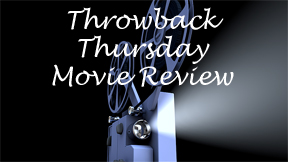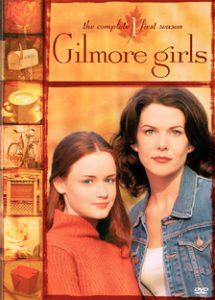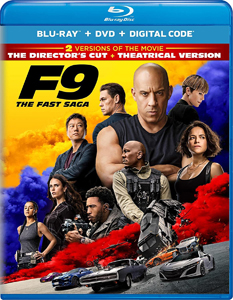When Richard Donner made “Superman” (1978), he regularly pitched the word “verisimilitude” around the set. He knew believability of the material – and universal cast-and-crew belief in what they were doing – was key to making the first great, grounded superhero film.
A similar situation is obviously not occurring on the “Fast and Furious” sets (and digital-effects studio computer screens). “F9: The Fast Saga” (2021) continues from the worst entry – 2017’s “Fate of the Furious” – as an unapologetic case of adults playing with action figures and Hot Wheels, only on scales of the globe and hundreds of millions of dollars.
Less bad than the previous one
“F9” is slightly less bad than “Fate.” Diesel and director/co-writer Justin Lin seemingly asked everyone to tone it down a tad. Although I still don’t give a rip about them, the “comedy” duo of Roman (Tyrese Gibson) and Tej (Ludacris) are less annoying than they’ve been in a while.

“F9: The Fast Saga” (2021)
Director: Justin Lin
Writers: Daniel Casey, Justin Lin, Alfredo Botello
Stars: Vin Diesel, Michelle Rodriguez, Jordana Brewster
The central conceit of Dom (Diesel) having a brother he has never talked about (to the audience) is plausible (by this series’ standards) because we gradually learn why he never speaks about him. (Dom shunned him over a misunderstanding, and Jakob turned evil.) John Cena is the latest ex-wrestler to enter the saga, and – because the plots have gotten so stupid and the existing characters so stale – the fact that he has a different skin color from his full-blooded brother is hardly worth criticizing.
It’s a cliché among critics to say an actor “doesn’t want to be there,” but that has never made sense to me. Especially if you’re making huge bucks, you’d have no problem being there and having fun with it. Yet in “F9” it plays like few of the actors believe in this material, except the uber-serious Diesel. And I suppose the smooth professionalism of Kurt Russell and Helen Mirren are always at a 10, so they get through without embarrassing themselves.
Rather than “not wanting to be there,” it’s probably a case wherein all the heroes are action figures rather than characters. Unless “Wow, he’s somehow alive!” is a character arc, no one has issues to deal with. On the bad-guy side, a couple of them must decide what lot to throw in with; that’s the closest we get to arcs.
I wonder if Charlize Theron (as supervillain Cipher, locked in a plastic Hannibal Lecter cage by Jakob’s group) is irked. Now that she is in the “Fast” films (and indeed, two of the worst), she’s blown her chance to be taken seriously in a classy action franchise like “Mission: Impossible” or “John Wick.”

Money is on the screen …
I guess she has money to console her. And speaking of money, it is on the screen – I’ll give Lin and his team that much. The centerpiece sequence finds our heroes using super-magnets in their race cars to fling parked vehicles at Jakob’s armored, multi-segmented military vehicle as they zoom along.
The editors do an amiable job of making this explicable. The good-guy driver turns on the magnet while slightly ahead of the bad guys, then quickly turns it off as they continue forward. As such, the projectile parked cars strike the bad-guy vehicle.
Here’s the problem: Lin and his two writers don’t care why this chase is happening. I suppose there’s an explanation, strictly speaking: Jakob’s team is uploading a super-virus from that armored vehicle to a satellite. Then it will bounce all over the world, destroying all digital records and allowing Jakob to rule the Earth.
The reason this is happening from a moving vehicle rather than a fortified building is “because this is a franchise about road chases.” Actually, the road chase is the relatively grounded part of a two-pronged finale. The other half follows Taj and Roman … well, I guess it’ll be too much of a spoiler to say where they go.
… but plausibility is not
But in that duo’s thread, too, the verisimilitude is not there. The “Fast” franchise doesn’t care about the realities of technology, operational financing, government responses to citizens possessing military might, justice systems, global politics, the logistics of going off the grid, collateral damage, physics, or how much punishment the human body can withstand.
In fact, Roman openly wonders if he is invincible. Taj makes fun of him, but Roman is now the sanest of the group: He has noticed they’ve warped into a parallel universe with different rules.
I’ve heard apologists say “Well, it’s a cartoon now.” What an insult to cartoons. Cartoons have character development. The best I can say about “F9” is some of these folks have traits. Nathalie Emmanuel is delightful as British tech-wiz Ramsey – but that’s because Emmanuel herself is delightful.
Well, one new wrinkle is added: Ramsey doesn’t know how to drive. Thus the sequence of her driving a large truck and smashing everything in sight – while a fight occurs in the back and its super-magnets go on and off – makes for another entertaining stretch in this 2-hour, 23-minute (!) film. (Too short for you? There’s also a director’s cut. LOL.)
Those super-magnets are the coolest weapon/gimmick in “F9: The Fast Saga.” The film itself, though, isn’t nearly as magnetic as its new toy.

